How to Fix Homemade Mayonnaise: It's So Easy
- Cara Russell Buckner
- Feb 25
- 4 min read
Updated: Apr 8
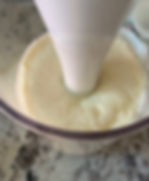
Skip the info
Making mayonnaise at home is relatively simple, and requires only a few ingredients that are probably already in your kitchen laboratory. If you own a hand blender, the process becomes even easier. If you don't own a hand blender, but you do own a standard blender, this process will also work well for you.
However, there are times when emulsifying oil and egg can lead to a broken mixture. Instead of achieving a thick, creamy mayonnaise, you may end up with a thin or grainy liquid that is less than appetizing. But don’t toss it in the trash just yet! I'm going to show you how to fix homemade mayonnaise.
Creating Creamy Condiments: The Art of Emulsification
Whipping up mayonnaise from scratch is a fascinating process where opposing forces are brought together to create something new. What am I talking about? You probably have heard somewhere that "oil and water don't mix." Yet, somehow that is exactly what they do--they defy the odds and come together to make something as everyday as Mayonnaise, or aioli. This little food alchemy results in a transformation known as emulsification.
But you cannot just pull out your whisk or blender, and whip the two together. There needs to be mediator, so to speak. In order for these two ingredients to come together, they need a third ingredient known as the emulsifier. When making mayonnaise, the emulsifier is egg (whole of just the yolk), aquafaba (chickpea bean water), or even milk. Here's the breakdown.
Egg Yolk: Egg yolk contains a natural emulsifier called lecithin. Lecithin molecules have both hydrophilic (water-attracting) and hydrophobic (water-repelling) properties, allowing them to stabilize the mixture of oil and water.
Aquafaba: This is the viscous liquid from cooked chickpeas (or other legumes). Aquafaba is rich in proteins and starches, which have emulsifying properties. These proteins and starches help to stabilize the oil and water mixture by reducing surface tension.
Milk: Milk contains both proteins and fat, with casein being the primary emulsifying agent. Casein molecules surround the oil droplets, preventing them from coalescing and thus stabilizing the emulsion.
Disclaimer: This article contains affiliate links. If you make any purchases from
using these links I may earn a small comission at no cost to you.
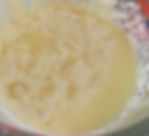
Why Did My Mayonnaise Fail to Emulsify?
Cold eggs can effect emulsification. Did you know that using cold eggs can get in the way of making that perfec homemade mayo? I personally have not noticed an issue, but the science is correct. When an egg is cold, the proteins are more tightly coiled. With everything so tight and closed up, this makes it more dificult for air to get incorporated.
Introducing the oil too quickly can effect emulsification. When emulsification fails, the cause is often due to the oil getting added too quickly to the oil. This can cause the mixture to separate—a discouraging situation for any food alchemist. A successful mayonnaise is made from gradually incorporating oil into the mixture. If the oil is added too quickly, the emulsifying agents, like egg yolk lecithin, cannot effectively surround and stabilize each tiny oil droplet. This causes the oil droplets to remain large and coalesce, failing to form a stable emulsion. The mixture then separates, resulting in a runny or broken mayonnaise.
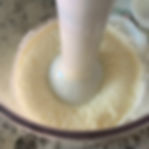
How to Fix Homemade Mayonnaise
With this one simple trick, you can salvage your food alchemy disaster and create a delicious mayonnaise using just a hand blender.
In this guide, we will walk through the process of rescuing your failed mayonnaise with an egg as your secret weapon. Let’s get started!
What You’ll Need
To fix your failed mayonnaise:
1 fresh egg or 1 fresh egg yolk (room temperature)
A tall, narrow container (for optimal blending with a hand blender. Ideally use the container that comes with your hand blender)
Your broken mayonnaise mixture
Step 1: Gather Your Ingredients
Start by ensuring all your ingredients are ready. Let your egg sit at room temperature for about 30 minutes. This step helps the emulsification process work effectively.
Crack the fresh egg, or egg yolk, into your narrow container, as it will serve as the new base to bind your mixture together. It's ok if your mayonnaise ends up with two eggs.
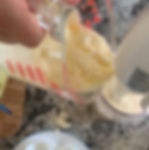
Step 2: Add the Broken Mayonnaise
Gradually blend in the broken mayonnaise into the container with the fresh egg, a tablespoon or two at a time. Be careful not to dump it in all at once; this slower addition is what prevents overwhelming the egg and disrupting emulsification.
Step 3: Blending
Insert the hand blender into the container, making sure it reaches the bottom.
Begin blending to combine the ingredients.
As the mixture begins to blend, slowly lift the blender upwards. This action helps emulsify the oil and egg together, reviving your mayonnaise.
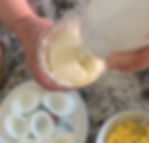
Step 4: Watch for Consistency
Keep blending until the mayonnaise thickens to your desired consistency. As you slowly add your broken mayonnaise to the new mayonnaise, look for the familiar thick and smooth appearance.
If your mayonnaise is still thin, continue blending. Sometimes emulsification can take time, so patience is key. When in doubt, just go slowly.
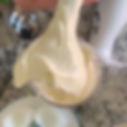
Tips for Future Mayonnaise Making
To steer clear of future mishaps, keep these helpful tips in mind:
Use Fresh Ingredients: Choose the freshest eggs and high-quality oil. Fresh ingredients yield better flavor and emulsification.
Room Temperature: Always ensure that all ingredients are at room temperature before starting. This is essential for a successful emulsion.
Add Oil Slowly: When making mayonnaise from scratch, drizzle the oil slowly while blending. This method prevents the mixture from splitting.
Be Bold with Flavors: Mayonnaise is versatile. Don't hesitate to experiment with different herbs, garlic, or spices to find flavors you love.
Final Thoughts
Salvaging a broken mayonnaise is not just about fixing a kitchen blunder; it's about gaining experience and knowledge as a home food alchemist. By better understanding emulsification and following these easy steps, you can transform a culinary setback into an alchemical success. It's part of the rewarding journey of cooking from scratch.
So, the next time your mayonnaise doesn't turn out as planned, take a deep breath and refer back to these steps. With a little patience and practice, you'll master the art of emulsification before you know it!

